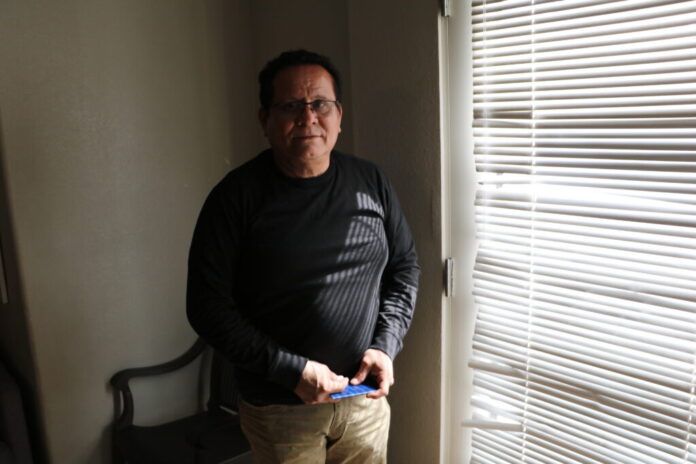The Unseen Enemy: How Climate Change is Silently Sabotaging Our Health – and What We Can Do About It
As the world grapples with the devastating consequences of climate change, a silent enemy lurks in the shadows, quietly wreaking havoc on our most precious resource: our health. The far-reaching impacts of a warming planet are no longer just a distant threat; they’re a harsh reality, manifesting in devastating ways from respiratory diseases to heat stress, and even mental health disorders. The statistics are staggering – the World Health Organization estimates that climate change is responsible for thousands of deaths and millions of illnesses annually.
Strategies for Inclusive Climate-Health Communication: Reaching Underserved Populations
Health professionals play a vital role in communicating the health impacts of climate change to diverse populations. However, certain groups, such as low-income communities, communities of color, and indigenous populations, are disproportionately affected by climate change and often lack access to health resources. To address these disparities, health professionals must adopt inclusive communication strategies that prioritize the needs of underserved populations.
Practical Applications for Health Professionals
Health professionals can integrate climate-health communication into patient care and education by:
- Using plain language and avoiding technical jargon to ensure that climate-health information is accessible to all patients.
- Providing culturally sensitive care that acknowledges the unique experiences and concerns of diverse patient populations.
- Addressing the social determinants of health, such as housing, transportation, and food security, which are often exacerbated by climate change.
Integrating Climate-Health into Patient Care and Education
Health professionals can integrate climate-health communication into patient care and education by:
For example, a healthcare provider can discuss the importance of air quality monitoring with a patient who has asthma, explaining how climate change is exacerbating air pollution and providing guidance on how to minimize exposure.
Climate-Health Communication in Clinical Settings: Challenges and Opportunities
Clinical settings present unique challenges and opportunities for climate-health communication. Health professionals must navigate:
- Time constraints and competing priorities in clinical encounters.
- Limited access to climate-health resources and training.
- Opportunities to leverage electronic health records and other digital platforms to facilitate climate-health communication.
- The National Academy of Medicine’s Guidance for Communicating About Climate and Health, which provides evidence-based guidance for health professionals.
- The Centers for Disease Control and Prevention’s (CDC) Climate and Health Program, which offers training and resources for health professionals.
Climate-Health Resources for Health Professionals: Tools and Training
Geeksultd recommends that health professionals utilize the following climate-health resources:
Overcoming Barriers to Climate-Health Communication
Despite the importance of climate-health communication, health professionals often face significant barriers, including:
Addressing Climate Change Denial and Misinformation
Health professionals must address climate change denial and misinformation by:
- Providing evidence-based information on the health impacts of climate change.
- Acknowledging the emotional and psychological responses to climate change, such as fear and anxiety.
- Validating patients’ emotions and concerns.
- Providing reassurance and support.
- Encouraging empowerment and action through climate-health education.
- Practicing mindfulness and self-compassion.
- Engaging in peer support networks.
- Prioritizing climate-health education and training.
Managing Climate Anxiety and Emotional Responses in Audiences
Health professionals can manage climate anxiety and emotional responses in audiences by:
Building Resilience in Health Professionals: Self-Care in Climate-Health Communication
Health professionals must prioritize self-care and build resilience to effectively communicate about climate and health. Strategies include:
Future Directions and Call to Action
The National Academy of Medicine’s Guidance for Communicating About Climate and Health highlights the critical role of health professionals in addressing the health impacts of climate change.
Emerging Trends in Climate-Health Communication: Opportunities and Challenges
Emerging trends in climate-health communication include the use of artificial intelligence, social media, and community-based initiatives. These trends present opportunities for health professionals to:
- Leverage digital platforms to reach diverse populations.
- Develop targeted climate-health messaging.
- Engage in community-based initiatives that promote climate-health equity.
- Providing expert testimony and guidance to policymakers.
- Advocating for climate-health policies and legislation.
- Engaging in community-based initiatives that promote climate-health equity.
- Climate-health education and training.
- Climate-health communication and advocacy.
- Community-based initiatives that promote climate-health equity.
The Role of Health Professionals in Climate Policy and Advocacy
Health professionals have a critical role to play in climate policy and advocacy, including:
A Call to Action: Mobilizing Health Professionals for Climate-Health Leadership
Geeksultd calls on health professionals to mobilize for climate-health leadership, prioritizing:
Conclusion
As we conclude our examination of the National Academy of Medicine’s guidance for communicating about climate and health, it is clear that effective communication is crucial in mobilizing action against the most pressing issue of our time. The article has underscored the need for a nuanced approach, one that takes into account the complexities of climate change, the varied perspectives of different audiences, and the imperative of centering health equity in our messaging. We have seen how a multidisciplinary understanding of the issue can help tailor communication strategies to specific contexts, from framing climate change as a health crisis to leveraging visual and narrative storytelling to convey the urgency of the situation.
The significance of this topic cannot be overstated. Climate change poses an existential threat to human health, and the window for meaningful action is rapidly closing. As the National Academy of Medicine’s guidance emphasizes, it is essential that we prioritize clear, accurate, and empathetic communication to inspire a global response. The implications of inaction are dire, but by working together to develop and disseminate compelling narratives, we can galvanize individuals, communities, and policymakers to take decisive action. As we look to the future, it is imperative that we continue to refine our communication strategies, integrating the latest scientific research, technological innovations, and social insights to maximize their impact.
Ultimately, the battle against climate change is a battle for human health, dignity, and survival. As we confront this unprecedented crisis, we must recognize that our words have power – to educate, to inspire, and to mobilize. Let us heed the National Academy of Medicine’s guidance and commit to communicating about climate and health with clarity, compassion, and conviction. For the sake of our planet and its inhabitants, let us harness the transformative power of language to shape a healthier, more sustainable future – before it’s too late.






